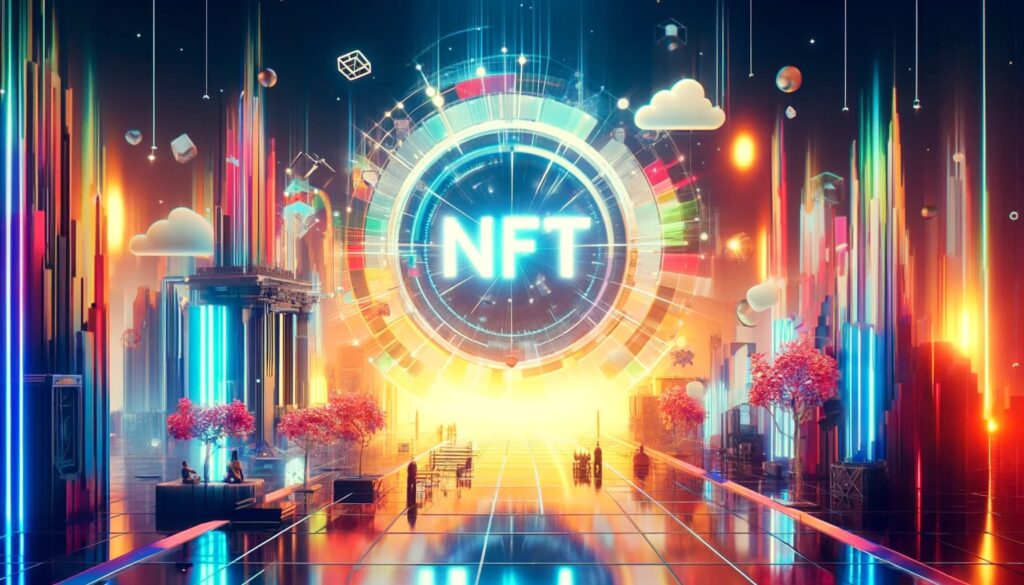Understanding Ethereum Code
Understanding Ethereum code involves delving into the source code of the Ethereum blockchain to comprehend its architecture, functions, and operations. Ethereum's codebase consists of bytecode, where each byte represents an operation. These operations interact with three types of storage, defining the behavior and functionality of smart contracts. Ethereum is a decentralized blockchain platform that executes and verifies application code, known as smart contracts, through a peer-to-peer network. By studying Ethereum code, developers gain insights into blockchain technology, smart contract development, gas transactions, security measures, and other fundamental aspects.
Ethereum Smart Contracts
Ethereum smart contracts are a revolutionary concept in the world of blockchain technology. They are computer programs that automatically execute contractual agreements on the Ethereum blockchain. In this section, we will provide an introduction to the concept of Ethereum smart contracts and highlight their importance and use in Ethereum development.

Ethereum smart contracts allow developers to create decentralized applications (DApps) and build innovative solutions for various industries such as finance, supply chain, gaming, and more. These contracts are written in Solidity, a programming language specifically designed for Ethereum.
The importance of Ethereum smart contracts lies in their ability to eliminate intermediaries, reduce costs, and increase transparency and security in transactions. Traditional contracts often involve intermediaries or third parties, which can lead to delays, high fees, and potential fraud. Smart contracts, on the other hand, are self-executing and do not require intermediaries. They automatically enforce the terms of the agreement, ensuring that all parties adhere to them.
Moreover, the use of Ethereum smart contracts opens up a whole new world of possibilities for developers. They can create decentralized applications that are tamper-proof and resistant to censorship. These applications can redefine industries by enabling peer-to-peer transactions, automating complex processes, and providing trustless systems.
Ethereum smart contracts are a key component of Ethereum development. Their introduction has revolutionized the way agreements are made and executed, offering benefits such as efficiency, transparency, and security. As we dive deeper into this topic, we will explore the various features, use cases, and potential challenges related to Ethereum smart contracts.
Brief overview of Ethereum and smart contracts
Ethereum, introduced in 2015, is an open-source blockchain platform that enables developers to build and deploy smart contracts. Unlike Bitcoin, which primarily focuses on peer-to-peer digital currency transactions, Ethereum provides a robust infrastructure for creating decentralized applications (DApps) using smart contracts. Smart contracts are self-executing contracts that run on the Ethereum blockchain and automatically execute predefined actions when specific conditions are met. These contracts eliminate the need for intermediaries and offer an immutable and transparent way to facilitate various transactions, agreements, or interactions. Ethereum's ability to execute complex programmable transactions and support the creation of decentralized applications has led to its widespread adoption and recognition as the second-largest cryptocurrency by market capitalization. It has also become a significant driving force behind the development of the decentralized finance (DeFi) ecosystem, providing users with access to innovative financial services without relying on traditional intermediaries. With its potential to revolutionize various industries, Ethereum's smart contract capabilities continue to attract attention and fuel the growth of the blockchain ecosystem.
Smart Contracts
Smart contracts are programmable agreements that utilize blockchain technology to digitize and automate the enforcement of predetermined conditions. Operating on the Ethereum network, these smart contracts allow for self-execution, eliminating the need for intermediaries and promoting a trustless system.
Blockchain technology ensures that smart contracts are secure and tamper-proof. It enables the creation of a transparent and distributed ledger, where all transactions are recorded and verified by multiple participants. Once deployed, smart contracts cannot be altered or manipulated, providing a high level of trust and reliability.
The benefits of smart contracts in the Ethereum network are numerous. Firstly, they remove the need for intermediaries, such as lawyers or brokers, reducing costs and streamlining processes. By automating the execution of agreements, smart contracts also eliminate the potential for human error or bias.
Additionally, smart contracts promote efficiency and speed in complex transactions. They allow for the automation of payment processes, ensuring that they are executed only when all predetermined conditions are met. This eliminates the need for manual verification and reduces delays or disputes.
Smart contracts also enable the creation of decentralized applications (dApps) and decentralized finance (DeFi) solutions. They provide a foundation for tokenization, enabling the creation and exchange of digital assets, such as cryptocurrencies or non-fungible tokens (NFTs).
Smart contracts in the Ethereum network offer a programmable agreement system that digitizes conditions, facilitates self-execution, and creates a trustless environment. With benefits such as reduced costs, increased efficiency, and the enabling of innovative solutions, smart contracts are revolutionizing various industries and transforming business operations.
Definition and importance in the Ethereum network
The Next Heading, in the context of the Ethereum network, refers to a key element that helps organize and structure information within the blockchain technology. It serves as a marker or pointer to denote a section or sub-section within a document or transaction on the Ethereum network.
The importance of the Next Heading lies in its ability to provide a clear hierarchical structure, facilitating easy navigation and understanding of the information stored on the Ethereum network. With the growth of decentralized applications and a vast amount of data being recorded on the blockchain, having a well-defined structure becomes crucial for efficient access and retrieval of relevant information.
The Next Heading is especially valuable when it comes to smart contracts, as it allows developers to categorize and reference different parts of the contract code, making it more readable and comprehensible. This improves the overall security and robustness of the smart contracts, minimizing the chances of errors or vulnerabilities.
In addition, the Next Heading helps streamline communication and collaboration among developers, as it enables them to quickly locate and refer to specific sections of codes, technical documentation, or informational resources. It enhances the overall development process, reducing ambiguity and ensuring consistency in understanding.
Therefore, the Next Heading plays a significant role in the Ethereum network, contributing to the efficiency, organization, and accessibility of information, particularly in relation to smart contracts and decentralized applications.
How smart contracts work on the blockchain
Smart contracts are one of the most innovative and transformative aspects of blockchain technology. Unlike traditional contracts, which rely on intermediaries and can be time-consuming, expensive, and prone to disputes, smart contracts operate autonomously on the blockchain, executing predetermined actions when predefined conditions are met. These self-executing contracts are written in code and stored on the blockchain, enabling transparency, security, and efficiency. In this article, we will delve into the inner workings of smart contracts, exploring how they leverage blockchain technology to revolutionize the way agreements are made and executed.
Decentralized Applications (DApps)
1. Decentralized Finance (DeFi): This category involves applications that aim to decentralize traditional financial systems and services. They utilize blockchain technology and smart contracts to enable peer-to-peer transactions, lending, borrowing, and other financial activities without the need for intermediaries such as banks. DeFi DApps provide increased user autonomy, transparency, and security.
2. Non-Fungible Tokens (NFTs): NFT DApps are focused on the creation, trading, and ownership of unique digital assets. NFTs are blockchain-based tokens that represent ownership or proof of authenticity of a specific digital item, such as art, music, collectibles, or virtual real estate. These applications enable artists, creators, and collectors to engage in the digital asset economy and participate in open marketplaces using NFTs.
3. Gaming Industry: DApps in the gaming industry are revolutionizing the way players interact with video games. These decentralized applications provide players with true ownership of in-game items and assets, as well as the ability to trade or sell them. Additionally, blockchain-based gaming DApps offer features like play-to-earn models, interoperability between different games, and provable fairness, enhancing the overall gaming experience.
4. Live Events Industry: DApps in this category aim to disrupt the traditional ticketing and event management systems by leveraging blockchain technology. These applications utilize smart contracts to ensure transparent and secure ticket sales, prevent scalping, enable peer-to-peer ticket transfers, and provide verifiable proof of attendance. This leads to more efficient and equitable event experiences for both organizers and attendees.
5. Smart Contracts: While not a specific category, smart contracts play a crucial role in many DApps across various sectors. Smart contracts are self-executing agreements with predefined rules encoded on a blockchain. They enable secure and automated transactions, eliminate the need for intermediaries, and ensure trust and transparency. DApps that heavily rely on smart contracts benefit from enhanced security, efficiency, and immutability.
These different categories of DApps offer innovative solutions in finance, digital asset management, gaming, live events, and more, powered by decentralization, blockchain technology, and smart contracts.
Explanation of DApps and their relationship with smart contracts
DApps, short for Decentralized Applications, are software applications that run on a blockchain network, such as the Ethereum blockchain. These applications are designed to provide users with a secure and transparent ecosystem for various purposes, such as finance, gaming, and social networking. In order to achieve this, DApps rely on smart contracts.
Smart contracts are self-executing agreements written in code that automatically execute predefined rules and conditions when certain conditions are met. These contracts are stored and run on the Ethereum blockchain, ensuring their integrity and immutability.
The relationship between DApps and smart contracts is symbiotic. DApps utilize smart contracts to enable trustless and decentralized execution of transactions. By leveraging the Ethereum blockchain, DApps eliminate the need for intermediaries, such as banks or centralized platforms, to verify and enforce transactions. Instead, the rules and conditions of transactions are encoded within the smart contracts themselves.
This trustless and decentralized execution is made possible through the consensus mechanism employed by the Ethereum blockchain. Users of DApps can interact directly with the smart contracts, knowing that the execution of transactions is validated and recorded by the network's decentralized nodes. This eliminates the need to rely on a central authority for trust, enhancing security and transparency.
Moreover, smart contracts enable DApps to automate and enforce the terms and conditions of agreements between users. Once the predefined conditions are met, the smart contracts automatically execute the agreed-upon actions, such as transferring funds or delivering digital assets. This automation reduces the risk of human error, ensures consistency, and eliminates the need for intermediaries to monitor and enforce agreements.
The relationship between DApps and smart contracts forms the foundation of a trustless and decentralized ecosystem, empowering users with security, transparency, and automation in their transactions.
Examples of popular DApps running on Ethereum
Decentralized Applications, also known as DApps, have gained significant popularity in recent years due to their ability to provide transparent, secure, and autonomous functionality on blockchain networks. Ethereum, one of the leading blockchain platforms, has become a breeding ground for numerous successful DApps that have revolutionized various industries. In this article, we will explore some examples of popular DApps running on Ethereum, highlighting their unique features and the impact they have made in their respective domains. From decentralized finance platforms to gaming and non-fungible token marketplaces, these DApps epitomize the potential of Ethereum and showcase the vast possibilities for blockchain technology in our daily lives. Let us delve deeper into the world of Ethereum DApps and their groundbreaking contributions.
Smart Contract Code
Smart Contract Code plays a fundamental role in Ethereum transactions. In simple terms, it refers to the self-executing digital contracts with the terms and conditions of the agreement directly written into lines of code. These contracts automatically execute once the predefined conditions are met, eliminating the need for intermediaries or third parties.
Ethereum, a decentralized blockchain-based platform, is the main player in the field of Smart Contract Code. To write these contracts, developers use a programming language specifically tailored for Ethereum called Solidity. In many ways, writing smart contracts is like following a recipe. Just as a recipe outlines the ingredients and steps to cook a dish, Smart Contract Code defines the conditions and actions required to execute a digital agreement.
Precision is crucial when writing Smart Contract Code. Even a small error can have significant consequences, as the code is immutable and cannot be altered once it is deployed on the Ethereum network. This makes careful testing an essential part of the development process. By thoroughly testing the code, developers can ensure that it functions as intended and is free of vulnerabilities.
A smart contract consists of several parts. Firstly, there is the contract's code itself, which defines the logic and behavior of the contract. Then, there are the contract's functions, which specify the actions that can be performed on the contract. Additionally, there are variables that store and manipulate data within the contract.
Smart Contract Code plays a vital role in Ethereum transactions. It is written using a programming language, similar to following a recipe, and needs precision and careful testing to ensure its integrity and functionality. By understanding and implementing these concepts, developers can harness the power of Smart Contract Code to create secure and efficient digital agreements.
Overview of how smart contract code is written
Smart contract code is written using Solidity, a programming language specifically designed for creating smart contracts on the Ethereum platform. Writing smart contract code requires precision and careful testing to ensure the code functions as intended.
To start writing smart contract code, developers must first define the contract structure. This includes specifying the contract name and declaring variables and functions. Solidity provides various data types such as integers, strings, addresses, and more, to define the variables needed for the contract.
Next, developers can define the functions that will be executed when interacting with the contract. These functions can include modifiers, which are conditions that need to be met before executing the function. The functions can also include events to notify external entities about specific actions within the contract.
Here is a simple example of a smart contract code written in Solidity:
```
pragma solidity ^0.8.0;
contract SimpleContract {
uint public value;
function setValue(uint newValue) public {
value = newValue;
}
}
```
In this example, the contract named "SimpleContract" has a variable called "value" of type unsigned integer. The function "setValue" allows users to modify the value stored in the "value" variable.
After writing the smart contract code, precision is crucial. Any mistake, even a small one, can have significant consequences for the contract's functionality and security. Therefore, developers must carefully review the code for any potential errors or vulnerabilities.
Once the code is written and reviewed, extensive testing is essential. Developers need to test the smart contract under various scenarios to ensure it behaves as expected and handles edge cases correctly. This thorough testing process helps identify and fix any issues before the contract is deployed to the Ethereum network.
Writing smart contract code involves using Solidity, defining contract structure, variables, and functions. Precision in code writing and careful testing are crucial to ensure the smart contract functions correctly and securely. Following these practices helps create reliable and trustworthy smart contracts on the Ethereum platform.
Comparison with traditional programming languages
In the ever-evolving field of technology, the emergence of new programming languages has revolutionized the way we develop software and solve complex problems. These new languages are often lauded for their simplicity, efficiency, and ability to handle vast amounts of data. However, it is essential to recognize that traditional programming languages, which have stood the test of time, still have their place. In this article, we will delve into the key differences between these new languages and their traditional counterparts, highlighting their distinct features, advantages, and disadvantages. By understanding how new languages compare to traditional ones, we can make informed decisions about which language to use, depending on the specific requirements and nature of the project at hand.
Blockchain Network
A blockchain network is a decentralized and distributed ledger that is used for storing and securing transactions. It is a digital database that is shared across multiple computers or nodes, with each node maintaining a copy of the entire blockchain.
The blockchain enables secure and transparent storage of transactions by using cryptographic techniques. These transactions are bundled together into blocks and added to the blockchain in a chronological order. Each block contains a reference to the previous block, forming a chain of blocks. Once a block is added to the blockchain, it is nearly impossible to alter or remove the transactions, providing a high level of security.
Full nodes play a crucial role in the blockchain network by verifying and relaying transactions and blocks. These nodes have a complete copy of the blockchain and actively participate in the consensus mechanism of the network. They validate transactions by checking their validity according to the predefined rules of the network, ensuring that only legitimate transactions are added to the blockchain. Full nodes also relay transactions and blocks to other nodes, contributing to the distribution of the blockchain across the network.
The distributed nature of the blockchain provides several benefits. Firstly, it eliminates the need for a central authority or intermediary, making the network resistant to censorship and single points of failure. Secondly, it enhances the security of the network, as no single entity can control the entire blockchain. Moreover, the distributed ledger allows for greater transparency and trust, as anyone can verify the transactions recorded on the blockchain. the blockchain network revolutionizes how transactions are stored and secured, offering a decentralized and secure alternative to traditional systems.
Explanation of the decentralized nature of the blockchain network
The decentralized nature of the blockchain network refers to the distribution of data across a network of computers, known as nodes, rather than being stored in a central location. Each node on the blockchain network maintains a copy of the entire blockchain, thus ensuring redundancy and eliminating a single point of failure.
When a new transaction is added to the blockchain, it is distributed to all the nodes in the network. Each node independently validates the transaction and ensures its compliance with the network's rules or consensus algorithm. Once the transaction is verified, it is added to a new block, which is then added to the existing chain of blocks. This process of data distribution and validation is carried out by all nodes in the network, ensuring transparency and accuracy.
The benefits of this decentralized architecture are manifold. Firstly, it enhances security. As data is distributed across numerous nodes, it becomes extremely difficult for malicious actors to tamper with or alter the information stored in the blockchain. Additionally, the redundancy of data across multiple nodes ensures the availability of data even if some nodes go offline.
Decentralization also enhances trust and transparency. Since each node independently verifies and validates transactions, no single entity can manipulate or control the data. This fosters trust among participants as they collectively maintain the integrity of the blockchain network.
Furthermore, the decentralized nature of the blockchain network eliminates the need for intermediaries or central authorities to oversee transactions. This reduces costs, speeds up processes, and enables peer-to-peer transactions without the need for a trusted third party.
the decentralized nature of the blockchain network ensures data distribution across a network of nodes, providing benefits such as increased security, trust, transparency, and reduced reliance on intermediaries.
Role of nodes in validating transactions
In the world of cryptocurrencies, such as Bitcoin and Ethereum, the validation of transactions plays a crucial role in maintaining their decentralized nature and ensuring the security of the network. Nodes, which are individual computers or devices connected to the cryptocurrency network, play a vital role in this process of validating transactions. By performing various functions and checks, nodes help to ensure that transactions are legitimate, accurate, and in compliance with the underlying protocol. This article will discuss the role of nodes in validating transactions and delve into their significance in upholding the integrity and efficiency of the cryptocurrency network.
Contract Accounts
Contract accounts are a fundamental component of the Ethereum blockchain that allows users to execute smart contracts and interact with decentralized applications (dApps). These contract accounts play a significant role in the Ethereum ecosystem by enabling the automation of trustless transactions and the execution of self-enforcing agreements.
Contract accounts on Ethereum are created when a user deploys a smart contract onto the blockchain. Unlike external accounts, which are created when users generate keys or import wallets, contract accounts are generated through the execution of code. This is driven by the Ethereum Virtual Machine (EVM), which processes and executes smart contract code.
The creation of contract accounts involves a two-step process. First, the contract code is written in a high-level programming language, such as Solidity, and then it is compiled into a format that can be understood by the EVM. Once compiled, the contract is deployed to the Ethereum blockchain, resulting in the creation of a contract account.
The significance of contract accounts lies in their ability to automate and enforce transactions without the need for intermediaries. They enable the execution of complex decentralized applications, such as decentralized finance (DeFi) protocols, where trust is established through code rather than relying on a centralized authority. Contract accounts are at the core of Ethereum's programmable blockchain and are instrumental in facilitating a wide range of decentralized applications and the growth of the Ethereum ecosystem.


